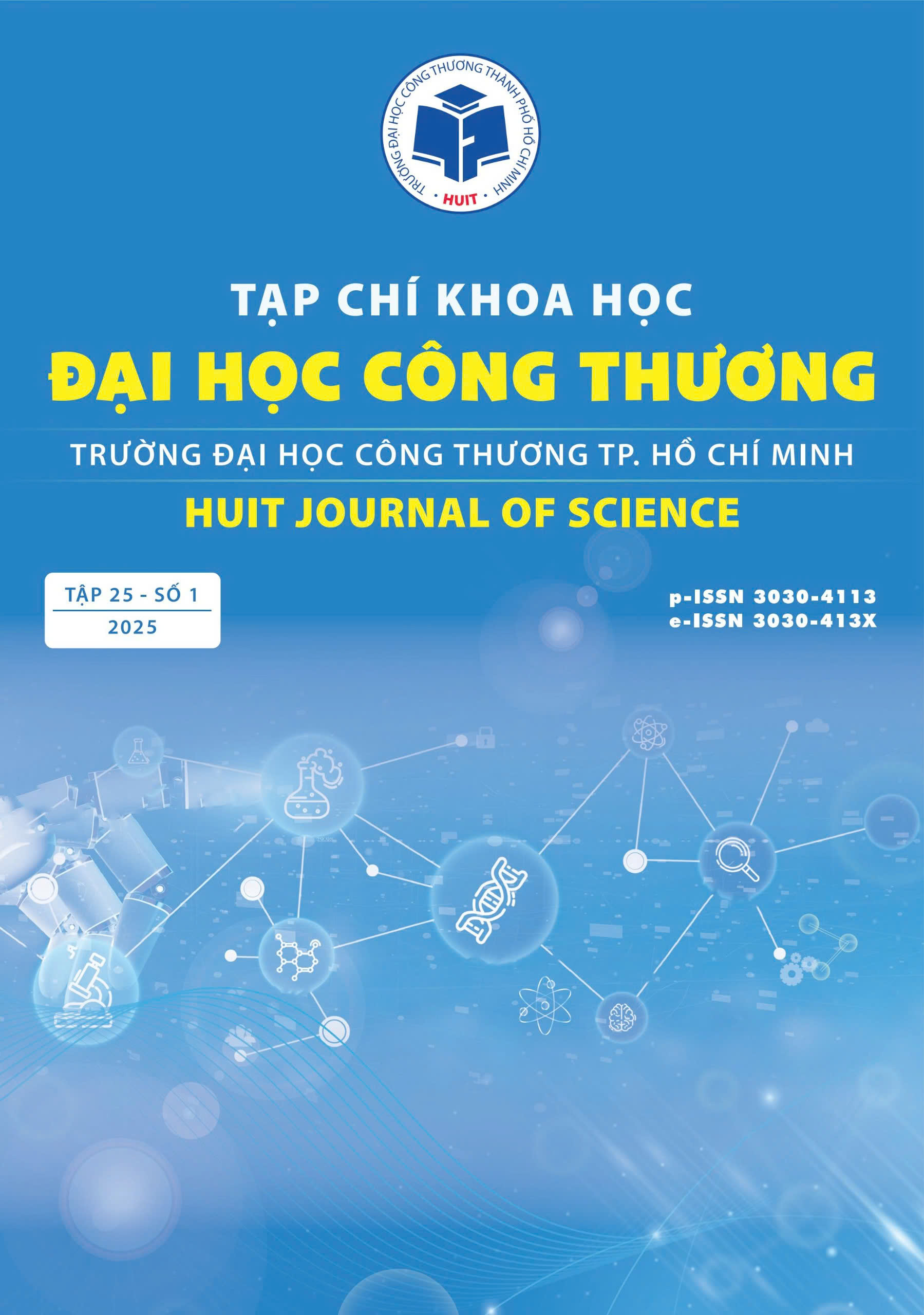Issue
Date Log
Copyright (c) 2025 HUIT Journal of Science

This work is licensed under a Creative Commons Attribution 4.0 International License.
EFFECTS OF LOW TEMPERATURE AND EDIBLE FILM FROM CHITOSAN COMBINED WITH Ag+ - NANO ON THE RATIO OF ROTTING - SPOILAGE OF Manilkara zapota DURING PRESERVATION
Corresponding Author(s) : Cao Xuân Thủy
HUIT Journal of Science,
Vol. 25 No. 1 (2025)
Abstract
Manilkara zapota has been originated from South America. Now, it is widely grown in Southeast Asian countries such as Thailand, Malaysia, Vietnam. Sapodillas (Manilkara zapota fruit) have been very popular because of its sweet taste, excellent aroma; high in nutrition and fiber. This study focuses on evaluating the simultaneous effects of low temperature and edible film (made from chitosan & Ag - nano) on the rotting-spoilage rate of Sapodilla during storage. The research results show that: during 16-day preservation, the temperature 12 °C - 15 °C has proved the efficiency in the preservation with lowest Sapodilla’s rotting-spoilage rate of 26.07%. The optimal chitosan concentration 1.5% would gain the lowest Sapodilla’s rotting spoilage rate (28.04%). However, when combining Ag - nano 4 ppm with chitosan 1.5%, the preservation time can be extended to 20 days and the lowest Sapodilla’s rotting-spoilage rate can be significantly reduced (20.01%). The comparing results of some Sapodilla’s quality indicators after 20-day preservation are as follows: TSS increases from 17.8 0Bx to 27.56 0Bx; TA increases from 0.87 g/100 mL to 1.56 g/100 mL. The weight loss rate of Sapodilla after 20 days of storage is 14.01%.
Keywords
Download Citation
Endnote/Zotero/Mendeley (RIS)BibTeX
